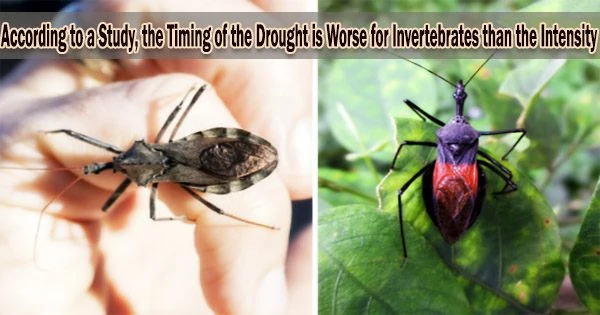According to a recent study led by Penn State that used an unique method to evaluate the stability of stream ecosystems, populations of different species of aquatic insects and other invertebrates react to flooding and channel drying as a result of drought in different ways that can be anticipated.
According to lead researcher Daniel Allen, assistant professor of aquatic ecology in Penn State’s College of Agricultural Sciences, a thorough understanding of the stability of stream ecosystems in response to these disturbances is required as the frequency and severity of floods and droughts rise due to climate change.
He explained that the dimensional stability framework employed in this research is an innovative approach in which multiple stability metrics are analyzed, but it has been rarely used in long-term observational studies of natural ecosystems.
This methodology was used in this study to analyze a long-term dataset of macroinvertebrates collected from an intermittent desert stream that frequently experienced hydrologic disturbances.
They discovered that invertebrate populations’ stability over time varied greatly, and that monsoon disturbances that varied wildly had a greater impact on a population’s stability metrics than disturbances that varied more steadily during the winter.
The research focused on Sycamore Creek in Arizona, one of the most extensively studied desert streams in the world. It drains a mountainous watershed of 164 square miles, with a stream gage in the Sonoran Desert. The area has a semi-arid, hot climate.
These species are responding to disturbances in different ways. Some are resistant to the disturbances. Some populations get knocked down really low, but then are able to recover very quickly afterwards. And then some do neither of those things, and those are the ones that are most prone to being wiped out and are at ecological risk.
Professor Daniel Allen
Most precipitation occurs during the winter (December to March) or monsoon (July to September) seasons. Sycamore Creek is prone to flash floods; however, some years the stream’s flow is greatly diminished, even drying up.
Sycamore Creek was sampled for benthic macroinvertebrates over the course of 35 years, from 1985 to 1999 and 2010 to 2019. The same site was used for both sampling intervals. A gravel run that was more than 325 feet long had samples taken at five different locations utilizing a streambed sediment corer to a depth of about 4 inches. Organisms from 18 taxonomic groupings were identified after samples were strained through a fine mesh net in the field.
“With Sycamore Creek, there’s a long record of how these organisms respond to winter floods, which are predictable in the sense that the occur every winter, but they vary from year to year in magnitude,” Allen noted.
Researchers can examine how the severity of those floods affected the stability of the various invertebrate communities by comparing years with significant floods to years with mild floods.
“But what is really interesting is that in addition to those winter floods, we also were able to analyze the impact on invertebrates of the other rainy season the summer monsoon,” said Allen, who is an affiliated researcher with Penn State’s Institutes of Energy and the Environment. “And we found that the summer monsoon is more impactful than the winter floods.”
Based on the dimensional stability framework they used, the researchers reported on the fate of aquatic invertebrates in Sycamore Creek in findings that were recently published in Limnology and Oceanography Letters. Aquatic invertebrate species populations differed in stability metrics as follows:
Some taxonomic groups like Chironomidae (non-biting midges) are very resistant, meaning that the flood and drought doesn’t reduce their abundance very much. Other taxa, including Fallceon (blue-winged olives in the family of mayflies called Baetidae), and Oligochaeta (aquatic worms), were extremely robust, which implies that populations were pushed down after a disturbance but quickly recover again.
Some populations, like some Coleoptera (beetles), were simply unchanging across time and underwent little alteration. Finally, some taxa like Hydropsychidae (net spinning caddisflies) and Tipuloidea (crane flies) were the best at recovering from a disturbance, meaning that they were typically able to regrow to pre-disturbance abundances.
“These species are responding to disturbances in different ways,” Allen said. “Some are resistant to the disturbances. Some populations get knocked down really low, but then are able to recover very quickly afterwards. And then some do neither of those things, and those are the ones that are most prone to being wiped out and are at ecological risk.”
“Disturbance regimes are transforming rapidly due to climate change increasing the magnitude and frequency of floods and drought,” Allen added. “So, we need to know how organisms are responding to disturbances and what the aquatic invertebrate community will look like in 20, 30 or 50 years.”
















